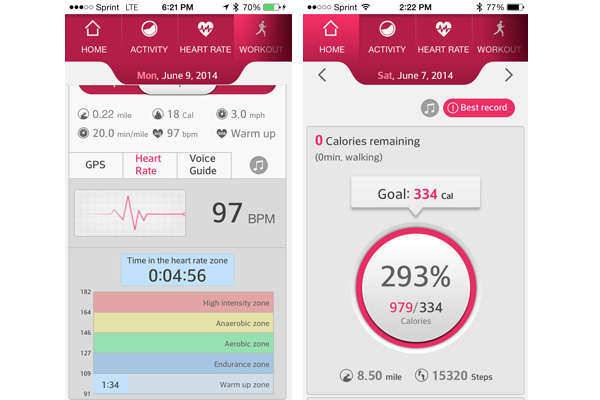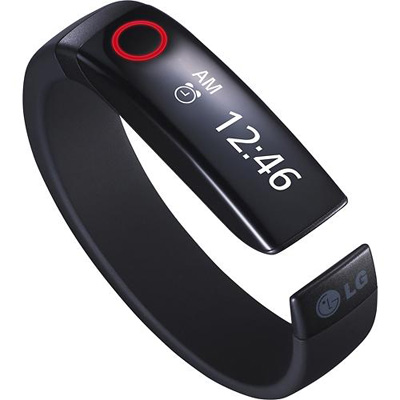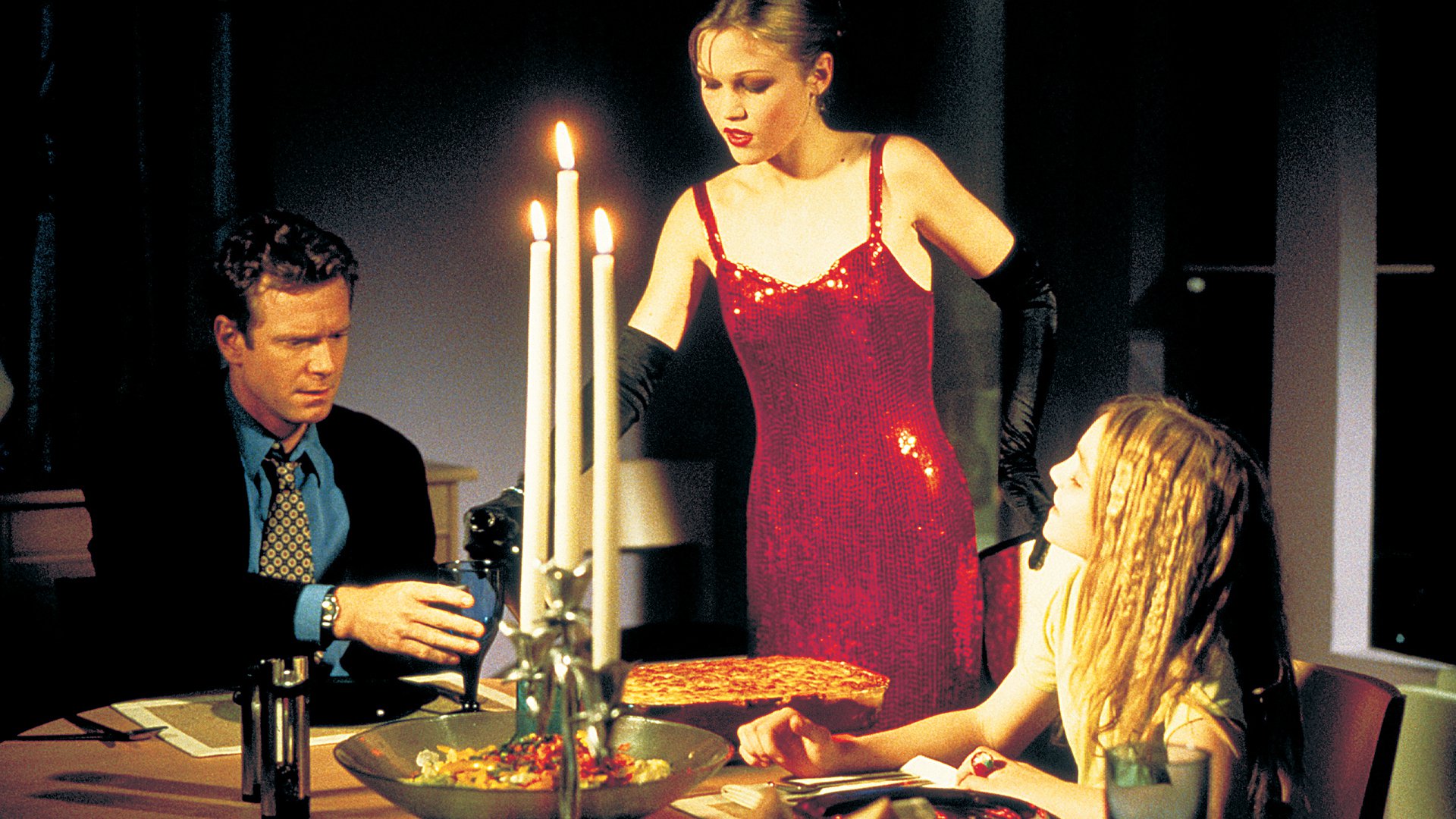Tom's Guide Verdict
While the LG LifeBand lets you start and stop workouts and control music right from your wrist, this fitness tracker is far too limited in form and function.
Pros
- +
Intuitive app interface
- +
Control music and workout from wrist
- +
Works with iOS and Android
Cons
- -
Heavy
- -
Can't view display in sunlight
- -
Glitchy app
Why you can trust Tom's Guide
Following in the footsteps of Samsung, LG is releasing its own fitness-centric wristband, the LG LifeBand. This $149 device does much more than just track your movements. A small touch-screen OLED display lets you control music, start and stop workouts, and even see if you're getting a call — all right from your wrist. However, its finicky app and some hardware issues mean you should skip this device.
Design
Unlike most fitness bands, the LifeBand doesn't completely encircle your wrist. Instead, the LG has a small gap, which lets you slide it onto your wrist. The band was somewhat comfortable to wear, but its thicker underside made it more cumbersome than the Samsung Gear Fit or Pebble, which have more-traditional, watch-type straps.

At 1.8 ounces, the LifeBand is much heavier than most other bands of its ilk. The 0.95-ounce Samsung Gear Fit is nearly twice as light, and the Pebble, at 1.3 ounces, is also a good deal lighter. Since you can't adjust it, the LifeBand comes in two sizes: Medium, which measures 6.5 inches in circumference, and Large, which measures 7.1 inches in circumference.
The top of the LifeBand is glossy black, and contains a 128 x 32-pixel OLED display. A small circular button on the right side turns the screen on and lets you cycle through the various menus: Time, Calories and Music controls. An LED around the button changes color from red to yellow to green based on how far you are on a target achievement.
MORE: Smartwatch Buying Guide
If you use an optional heart rate monitor, the LED also changes color — from blue to green to yellow to red — to indicate which heart rate zone you're in (Warm Up, Endurance, Aerobic, Anaerobic or High Intensity).
The LifeBand's display is touch sensitive, so swiping to the left or right within each menu reveals additional menu options. For example, in the Time screen, swiping to the right reveals the battery level, then the date.
Get instant access to breaking news, the hottest reviews, great deals and helpful tips.
Raising the LifeBand to your face automatically turns on the OLED display, but it will remain illuminated for only up to 10 seconds (you can adjust the auto-off time using the LG Fitness smartphone app). We wish there were an option to leave the display on permanently. More critically, though, the display is nearly impossible to see outside. On a sunny day, we had to find a shady spot and cover the screen with our hand to make out what was being shown.
App
The LG Fitness app shares a color scheme with the electronics company, which not only provides a strong association with the brand, but also makes this fitness app stand out from competitors. The iOS version we tested is compatible with the iPhone 4S and later, and an Android version works with devices running 4.3 or later, such as the LG G2, Nexus 5 and LG G Flex, along with the Samsung Galaxy Note 2, Galaxy Note 3, S3, S4 and S5.

Along the top of the display are icons for Home, Activity, Heart Rate, Workout and More; you can only see four icons at a time.
Below the icons is a summary of your day's activities. On the Home screen, a circle in the middle shows how far along you are in completing the day's goals, how many miles you've walked and how many steps you've taken. Scroll down a bit more, and you can see your activity for the day and week on a timeline, along with calories burned.
Select the Activity tab, and you can dive into greater detail about your activities and workouts. If you click on a specific workout, it will show a map of where you ran, your distance, pace and calories burned. We like that the app even showed our split times for each mile.

If you use the $179 LG HeartRate earphones, or a heart rate monitor from Polar, Zephyr or Wahoo Fitness, the Heart Rate tab will show you beats per minute and VO2 Max, a measure of your overall cardiovascular fitness.
The Workout tab lets you start a workout. If you have the LG HeartRate earphones connected, the device will also provide heart rate information and a voice guide that will tell you distance, time, speed, pace and calories, among other metrics. We like the voice guide, as well as the ability to customize which alerts you receive and how often you receive them. What we don't understand, though, is why this feature only works with LG's earphones, when all other fitness apps will provide this information with any pair of headphones.
You can connect the LG app to MyFitnessPal, RunKeeper and MapMyFitness, as well as Facebook and Twitter.
Performance
Thankfully, we didn't notice the LG LifeBand's weight once we started running. However, the display was nearly impossible to read in direct sunlight. We couldn't view our distance, pace, time, heart rate or anything else for that matter, unless we stopped and looked at the screen in the shade.
Our biggest issue was with the LG Fitness app. While it recorded a 6-mile run as 5.86 miles, and accurately showed our starting point, the end point was in the middle of the Hudson River, and the map did not show the course we had run.

When we started a workout using the LifeBand, but didn't have the app open and in the foreground on our iPhone, we encountered a few other issues: One time, the device failed to record our heart rate. Another time, it didn't track our route on a map.
The LifeBand's reporting mechanism to RunKeeper is also faulty. Every movement, no matter how small, was reported as a separate activity. For just one day, we ended up with more than 30 separate walking activities, each one no more than 0.26 miles or so.
To top off matters, the iOS app repeatedly crashed on us.
One advantage the LifeBand has over most other fitness bands is its ability to alert you to a phone call. In practice, though, this wasn't particularly useful, at least on an iPhone. When a call came in, the LifeBand buzzed and displayed a small phone icon. If you're using the LifeBand with an Android device, the phone number will also be displayed. LG says that you can reject calls by covering the display, but this feature, too, only works on Android devices.
Users of Android devices will get one other benefit. If you receive a text message, the sender's number will appear on the LifeBand, next to a small envelope icon. However, you'll need to pick up your phone to see the message's contents.
Battery Life

LG says the LifeBand will last about 5 days on a charge. That's slightly longer than the Gear Fit, which lasted about 4 days, but a few days less than the Pebble, which can make it about a week.
On the underside of the LifeBand are five metal contacts that connect to a proprietary USB charger. However, we found that the charger did not stay as securely in place as we'd like, and would easily pop off.
Bottom Line
The $149 LG LifeBand has some potentially useful features, such as the ability to start and stop workouts right from our wrist, change music and even see who's calling. However, a bulky design, poor outdoor readability and a buggy app make this device hard to recommend.
For the same price, the Pebble offers similar features plus thousands of additional apps. Although it's limited to Android devices, the Samsung Gear Fit is lighter, offers a much more vibrant display, better notifications and a built-in heart rate monitor, all for just $50 more. In the world of fitness devices, the LG LifeBand just doesn't measure up.
- Top 5 Smartwatches to Watch
- Best Smartwatches
- Smartwatch Face Off: Pebble vs. Sony Smartwatch 2 vs. Galaxy Gear

Michael A. Prospero is the U.S. Editor-in-Chief for Tom’s Guide. He oversees all evergreen content and oversees the Homes, Smart Home, and Fitness/Wearables categories for the site. In his spare time, he also tests out the latest drones, electric scooters, and smart home gadgets, such as video doorbells. Before his tenure at Tom's Guide, he was the Reviews Editor for Laptop Magazine, a reporter at Fast Company, the Times of Trenton, and, many eons back, an intern at George magazine. He received his undergraduate degree from Boston College, where he worked on the campus newspaper The Heights, and then attended the Columbia University school of Journalism. When he’s not testing out the latest running watch, electric scooter, or skiing or training for a marathon, he’s probably using the latest sous vide machine, smoker, or pizza oven, to the delight — or chagrin — of his family.

